Georges
Brassens was born in Sète, France, in the department of
Hérault, in the region of Occitania. At the time, and until
1927, the town was called Cette and had 36,503 inhabitants, while
in 2018 it had 43,686.
Jean-Louis, Georges's father,
was an atheist and anti-clerical mason from Sète, while
his mother Elvira
Dagrosa
was a practicing Catholic, born in Sète to a family of
immigrants from Marsico Nuovo (in the province of Potenza, Italy).
Elvira was a war widow and mother of a little girl, Simone Comte,
born in 1915 and later known as Simone Cazzani, after her marriage to Yves Cazzani.
The house where Georges
was born lies in a road currently named rue
Georges Brassens
at number 54 (now 20), and a plaque has been placed on it. In the
same street, at
the corner
with rue de la Révolution, there is a mural painting dedicated to
him by the graffiti artist Maye.
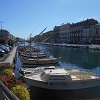
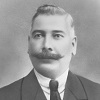
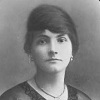
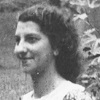
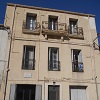
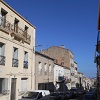
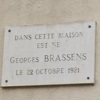

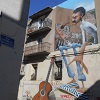
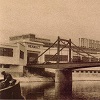
In 1940
Georges moved to Paris to work at the Renault factory in Boulogne-Billancourt, but after the
Nazi occupation of the capital he returned to Sète. After
the armistice he returned to Paris, but in 1943, he was forced
to work at the BMW factory, in the Basdorf labor camp, near Berlin,
following a compulsory work decree (STO, Service du travail obligatoire).
Back in France on sick leave, Brassens did not return to Germany
and waited for the end of the war in Paris, where he lived the
rest of his life, but he often returned to Sète, where
he also performed at the Municipal Theater.
Georges Brassens died on October 29th, 1981 at 11:15 pm, in the village of Saint-Gély-du-Fesc,
also in the Hérault, just over 40 km (25 Mi) from Sète,
in the house of his surgeon, Dr. Bousquet, where he had celebrated
seven days before his sixtieth birthday.
The love for his hometown can also be read in one of his best
known songs : “Supplique pour
être enterré à la plage de Sète”, which
gave the name to the 1966 album, in which he expressed the desire to be
buried on Corniche
beach
in Sète.
Actually, Brassens'
grave
is not on the Corniche beach, as he wished, but it anyway has
a
sea view.
With him in the grave rest his half-sister Simone with her husband
Yves Cazzani, and his partner, from 1947 until his death, Joha
Heiman
(1911-1999), an Estonian
from Tallinn, whom he affectionately called «Püppchen»
(little doll in German), even though they both spelled the name
as «Püpchen». Joha and Georges never married
and never lived together, but he wrote for her : « J’ai
rendez-vous avec vous », « Je
me suis fait tout petit (devant une poupée) », «
Saturne », «
Rien
à jeter
» and « La Non-Demande
en mariage
».
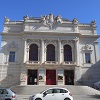
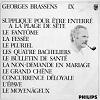
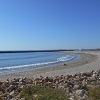
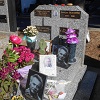
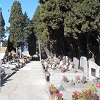

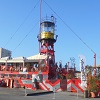
The city of Sète, on the occasion of the centenary of Brassens, has set up an old lightvessel, the Roquerols, devoting it to meetings, conferences and concerts about Georges.
 page
created: October
20th, 2021 and last updated:
October
27th, 2021
page
created: October
20th, 2021 and last updated:
October
27th, 2021